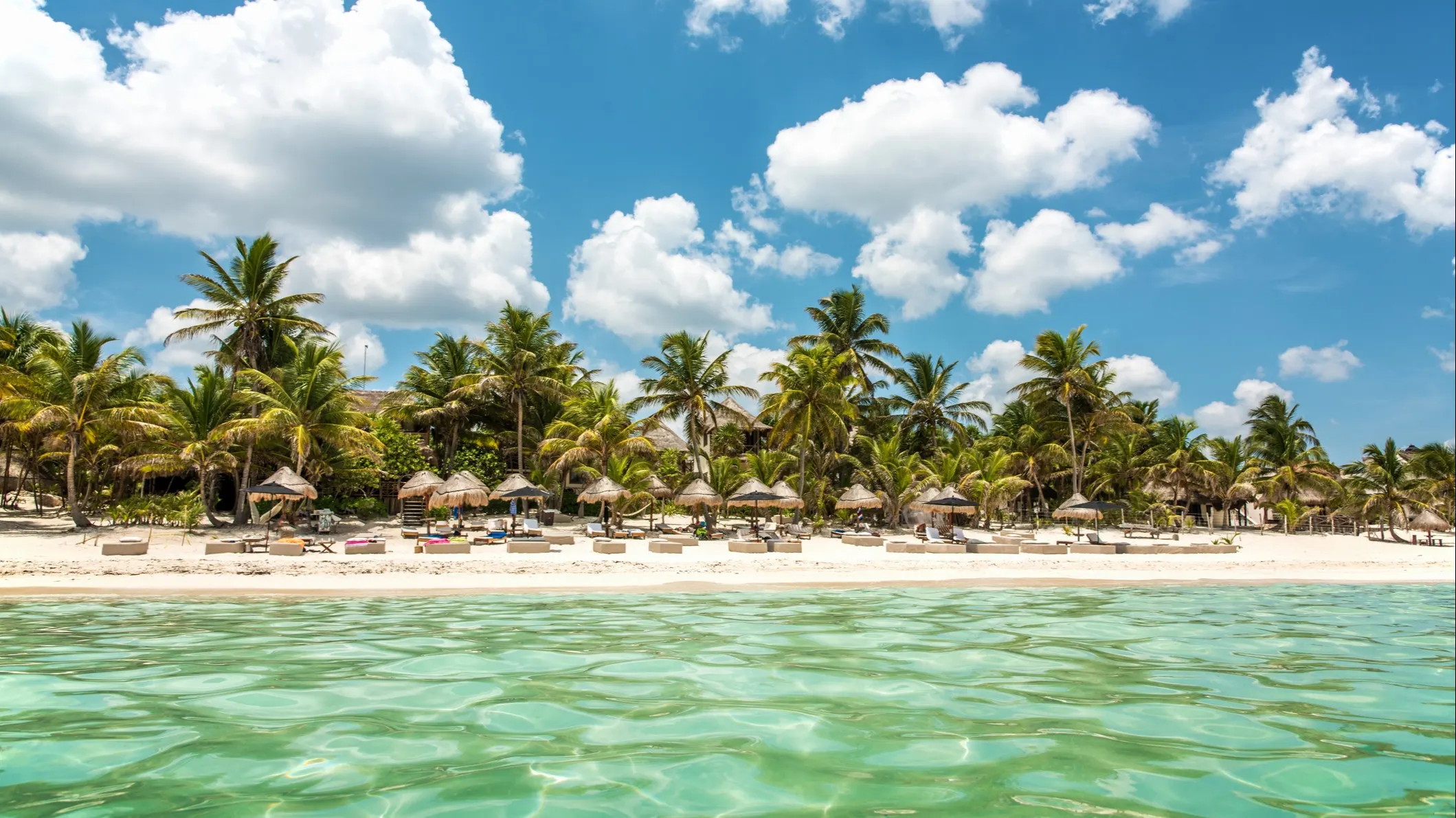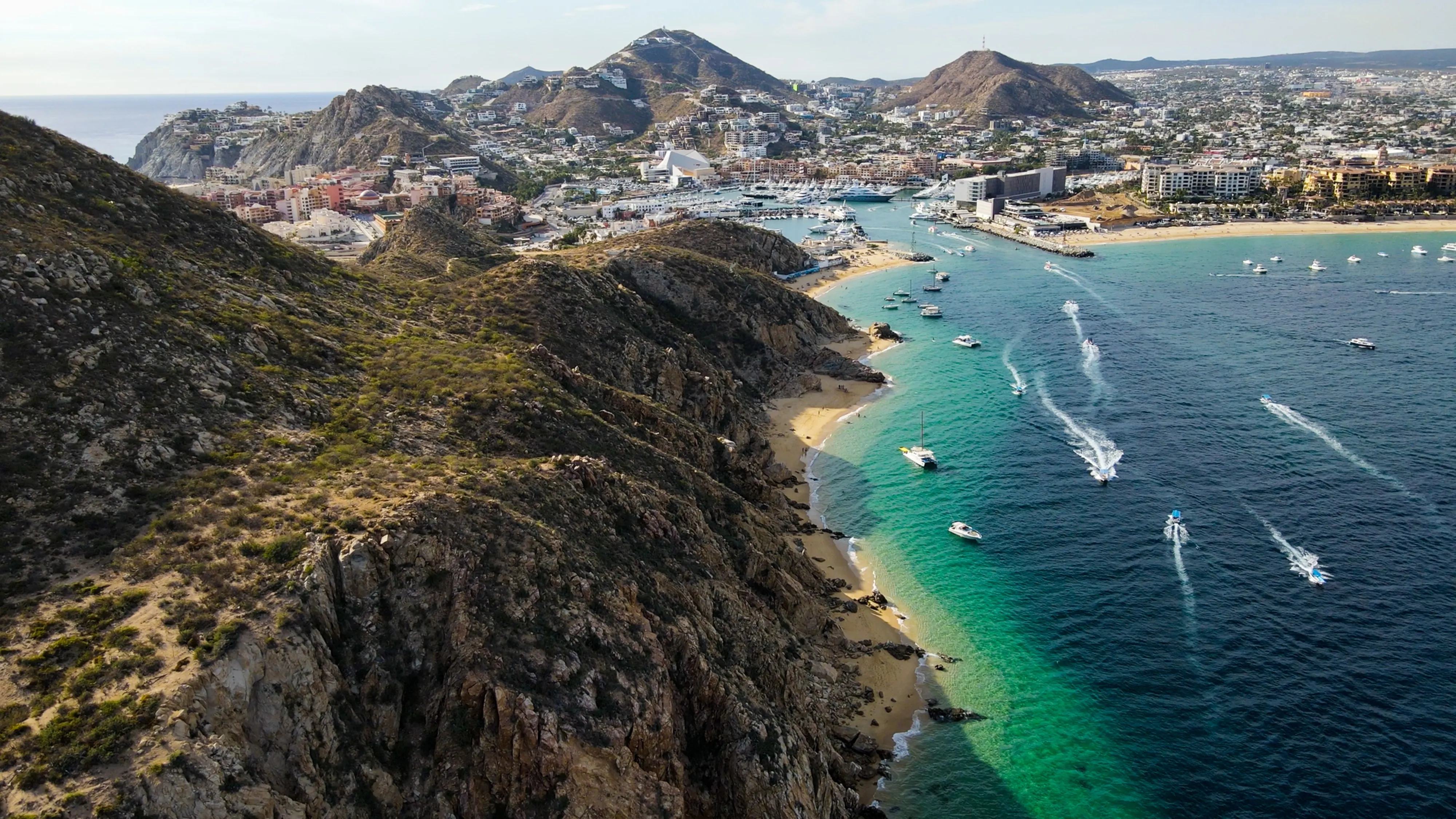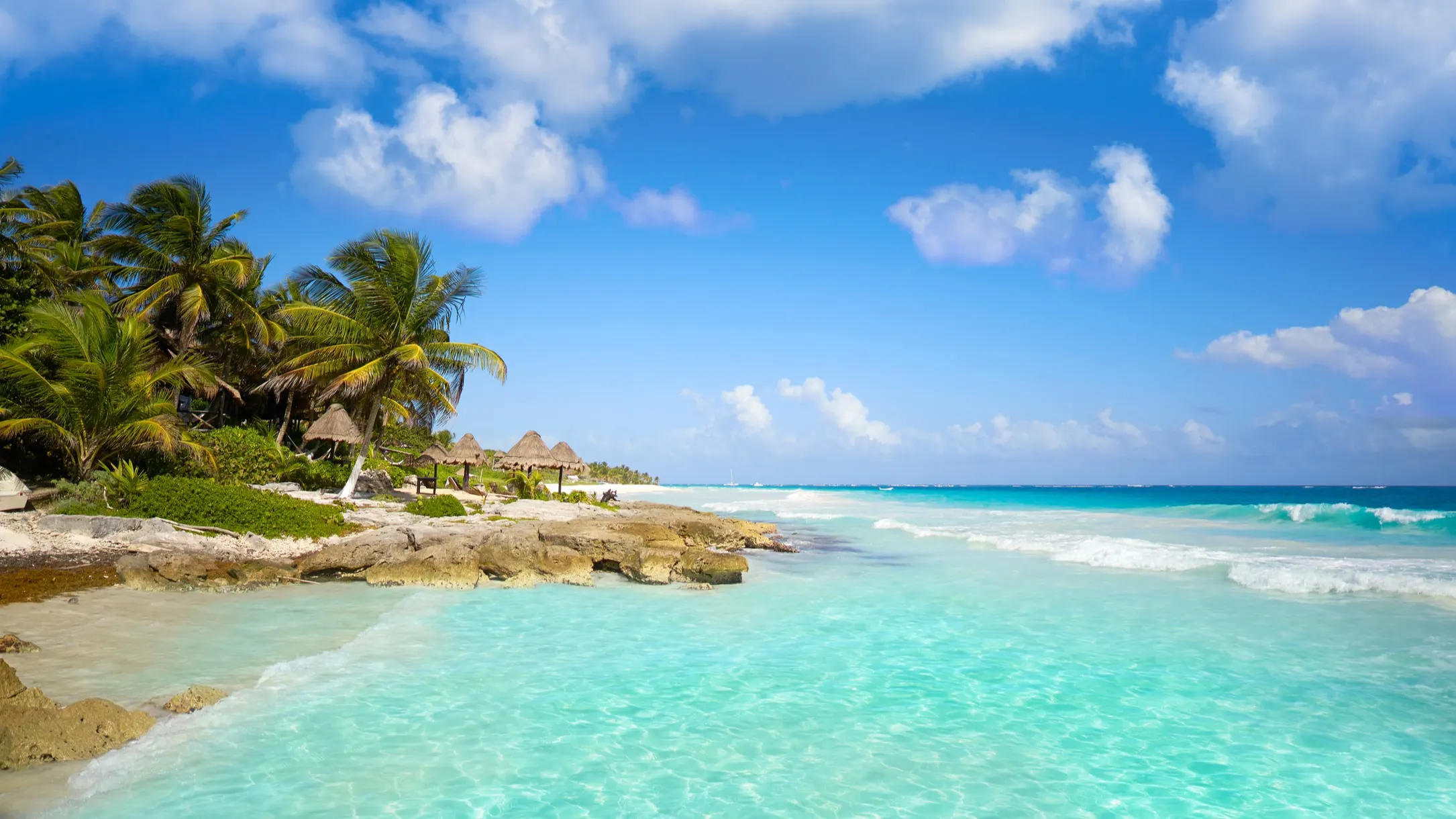The International Real Estate Trend Offering Huge ROI
9 min readMichael used to be tied to his desk. Now, his colleagues never know where he’ll be when he logs on. Sometimes his background on Zoom meetings is his quaint home in Virginia Beach… sometimes his luxury condo in the Costa del Sol… and sometimes an Airbnb in Lisbon, Paris, or one of the other European capitals a short flight from his winter base in Spain.
It all used to be different, but when Michael’s finance role became remote, he sold his expensive place in New York and invested in properties. He bought homes in Virginia and Spain, plus two condos in Playa del Carmen along Mexico’s Caribbean coast that he rents out long-term.
Demand is so high from remote workers in Playa that Michael’s earning a 9% gross yield on his condos. This income combined with his salary, plus some additional earnings from renting his Costa del Sol home short-term when he’s not using it, means he’s never been better off.
Learn more about the Best Places in the World to Buy Real Estate in our daily postcard e-letter. Simply enter your email address below and we’ll send you a FREE report – The World’s Best Places to Buy Real Estate.

By submitting your email address, you will receive a free subscription to Your Overseas Dream Home and special offers from International Living and our affiliates. You can unsubscribe at any time, and we encourage you to read more about our Privacy Policy.
Michael’s never met his renters in Playa—his rental-management company handles that—but they’re remarkably similar to him. One is Bob, a software engineer who swapped his apartment in San Francisco for one of Michael’s two-beds. He’s paying $2,300 per month and it feels like a bargain after spending years shelling out north of $3,000 in San Francisco.
Mary, another Playa renter, is paying the same amount and feels like she got a bargain, too. She used to be in-office every day at her design firm in Boston before she and her co-workers were offered fully remote roles. She’s now been in Playa for over a year—long enough to forget how hard she used to find winter commutes.
Michael, Bob, and Mary are fictional composites of the professionals now arriving en masse in the world’s most internationalized and desirable locations. I’m seeing people just like them, with just these kinds of stories, in my real estate scouting trips around the world. Because of the rise of remote working, places long viewed primarily as vacation destinations—such as Cabo, Portugal’s Algarve region, Spain’s Costa del Sol, and Tulum and Playa del Carmen on Mexico’s Caribbean coast—are seeing growing numbers of residents.
This means long-term renting is now an attractive prospect for real estate owners in these destinations, offering strong yields and less hassle than renting short-term. Or you have the option of a hybrid strategy—rent to a digital nomad for six months, rent short-term for a few months, and see handsome returns while having enough time to enjoy the place yourself.
The gains from these strategies can be exceptional. In Playa, luxury two-bed condos in prime locations can list for $2,000 to $2,600 per month long-term. In Cabo, owners in the community where I spend time list their luxury beachfront condos for $3,500 per month or more. And in the Algarve, my contact recently put a client’s villa up for long-term rent at €4,000 per month. He told me he put a single ad on Facebook and quickly got 87 inquiries, including at least seven from people who were willing to pay a year’s rent upfront.
Put it all together, and the rise of long-term renting adds up to the most important trend in international real estate. And now is the time to take advantage.

©iStock/Mlenny
COVID accelerated many trends, but the most significant is the “work from anywhere” phenomenon. The pandemic didn’t start this revolution—which I call the “Zoom Boom”—but it did kick it into overdrive. This trend made big headlines when it was first emerging, but it’s since faded somewhat from the public consciousness.
That’s often the way it goes with historic social changes like these. They can feel mundane when you live through them. But make no mistake, this is a transformation akin to the great urban migration of the industrial age. Just look at the impact it’s having on the world’s great cities.
If you add up all the empty office space in New York City today, it totals 95 million square feet. That’s the equivalent of 30 Empire State Buildings. Average it out and roughly one in five offices in New York currently sits empty. Elsewhere in the US, the situation is more severe. In Chicago, one in four offices are empty. In San Francisco, the office vacancy rate tops 35%—the highest level ever recorded in the city. A major commercial real estate firm, Cushman & Wakefield, estimates that a quarter of all US office space will be obsolete by 2030.
Learn more about the Best Places in the World to Buy Real Estate in our daily postcard e-letter. Simply enter your email address below and we’ll send you a FREE report – The World’s Best Places to Buy Real Estate.

By submitting your email address, you will receive a free subscription to Your Overseas Dream Home and special offers from International Living and our affiliates. You can unsubscribe at any time, and we encourage you to read more about our Privacy Policy.

©iStock/grandriver
As a real estate scout and investor, I’ve been following the remote working trend with intense interest since long before the pandemic made it mainstream. Indeed, my team at Real Estate Trend Alert was an early adopter of this trend. Our “office” has been entirely virtual ever since I founded RETA back in 2008. Today, members of my team are spread out across the US, the UK, Ireland, Panama, and Colombia, while I have my home in Ireland and spend time at my condos in Cabo and Portugal.
Now that millions of workers are untethered from the office, they’re waking up to these sorts of lifestyle opportunities. This is what I’m seeing right across my beat. I’ve been scouting real estate opportunities in Cabo since 2014. Every year I return, I encounter more expats and long-term residents, including many work-from-anywhere folks. Californians, in particular, are drawn to Cabo, where they find many of the things they love about home without the things they hate—like high taxes, low quality of life, congested freeways, and crazily-high real estate and rental prices.
And when Californians come to Cabo, they bring their price expectations. When you were paying $3,000 or $4,000 per month for a condo in San Francisco or LA, the idea of paying the same amount for a spacious, luxury condo with ocean views seems reasonable. These higher price expectations, coupled with growing demand, have led to a spike in rental rates.
When I’m in Cabo, I stay at my condo in the best-in-class Copala community in the five-star Quivira resort. Last year, I earned $3,000 per month renting it out when I wasn’t using it. And I could have earned more, but I chose to offer a generous rate to a single renter who could work around my return dates. Elsewhere in my community, long-term rental rates now start at $3,500 per month.
Then there’s the effect of all this demand on capital appreciation. I bought my condo in a deal I brought to RETA members in 2015. The RETA-only price on a two-bed, two-bath, ocean-view condo was $336,156. Last year, an identical condo two floors above me listed for $725,000. That’s an uplift of $388,844. And it’s a similar tale with our other RETA-only deals in Cabo:
-
Boost of $375,371 — We’ve had several deals in Quivira. Another condo in Copala that had a RETA-only price of $324,628 listed last year for $699,999.
-
$212,400 more — In May 2022, we had a deal in a community called Monte Rocella. I bought two condos alongside RETA members in this deal. A condo that RETA members could buy for $272,600 in May 2022 has since been listed for $485,000.
-
Uplift of $250,000 — In August 2021, RETA members could get a penthouse in a community called Cabo Costa for $249,000. I got one. Today a penthouse in Cabo Costa lists for $499,000.
Travel to the far side of Mexico and you’ll find a similar trend playing out.

©iStock/LUNAMARINA
The Riviera Maya refers to the 80-mile stretch of Caribbean coast south from Cancún. This is a riotously beautiful part of the world, filled with white-sand beaches, warm, azure waters, incredible food and culture, and world-leading destinations such as Playa del Carmen and the trendy beach town of Tulum.
This has long been an exceptionally strong market for short-term rentals. For vacation season, the best rentals are snapped up months in advance. But as the remote-working revolution has taken hold, the long-term rental market here has strengthened. With the right type of condo on the Riviera Maya, you can get fantastic long-term rental returns.
Consider the condos I recommended in Playa del Carmen. In May 2017, I brought RETA members the chance to lock down two-bed condos in a community called Siempre Playa for $193,800. The first owners moved into their condos in Siempre in 2021 and many are renting them out now.
Rent out a two-bed condo long-term there and you can expect to earn $2,000 to $2,600 per month. With a RETA get-in price, that’s a gross yield of 12% to 16%. Then there’s the capital appreciation. Last time I checked with the developer, luxury two-bed condos in Siempre Playa were listing from $419,409 at retail—$225,609 more than RETA members paid.
This Zoom Boom revolution is fundamentally changing these destinations. Indeed, I now view Cabo as a satellite of the Californian market. The same is true in the Riviera Maya, which today is more closely aligned with the Florida market than surrounding Mexico. And the same trends are playing out too in the Algarve… in Medellín, Colombia… in the Costa del Sol…
It comes down to this: New York can never become a tropical beach destination. But tropical destinations like Cabo and Playa can become (and are becoming) centers of art, culture, music, and commerce. This has important implications as work from anywhere evolves into a permanent part of global business.
It means that today, owning the right real estate in a highly desirable destination overseas is one of the savviest investments you can make. But with prices rising rapidly, the window to take advantage of this trend is short. Which is why my team and I are fanning out across the world to find the best opportunities to profit from this trend, so we can bring them to Real Estate Trend Alert members.
More than 2 million people have left America’s 10 biggest cities since the pandemic. Many of them are full-time remote workers. The majority of them will never return to working full-time in-office—despite the best efforts of some businesses and industries to compel them to do so.
Last year, large numbers of companies introduced “return to office” mandates. But workers fought back and the mandates largely failed. A Gallup survey found that eight in 10 remote-capable employees are still working hybrid or remotely.
This is an important update on this trend. Go back to the start of last year and corporate leaders like JPMorgan boss Jamie Dimon were telling the world that the remote working revolution could and would be rolled back.
A year on, that’s been disproven. Remote work is here to stay. And this equates to a huge opportunity for investors who understand its implications.
Learn more about the Best Places in the World to Buy Real Estate in our daily postcard e-letter. Simply enter your email address below and we’ll send you a FREE report – The World’s Best Places to Buy Real Estate.

By submitting your email address, you will receive a free subscription to Your Overseas Dream Home and special offers from International Living and our affiliates. You can unsubscribe at any time, and we encourage you to read more about our Privacy Policy.



